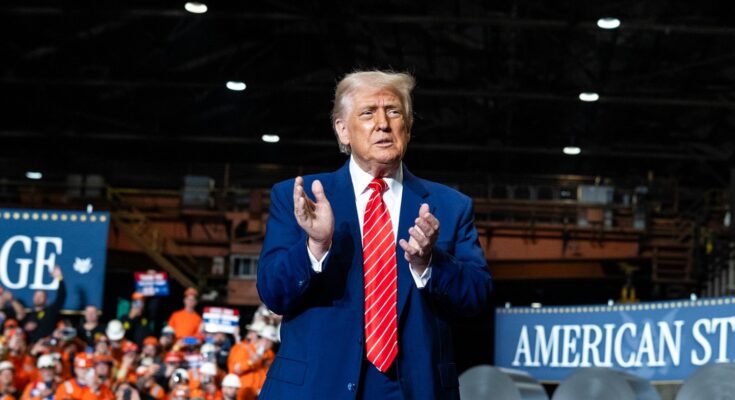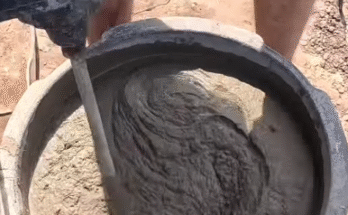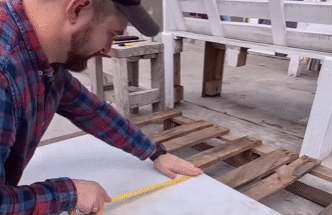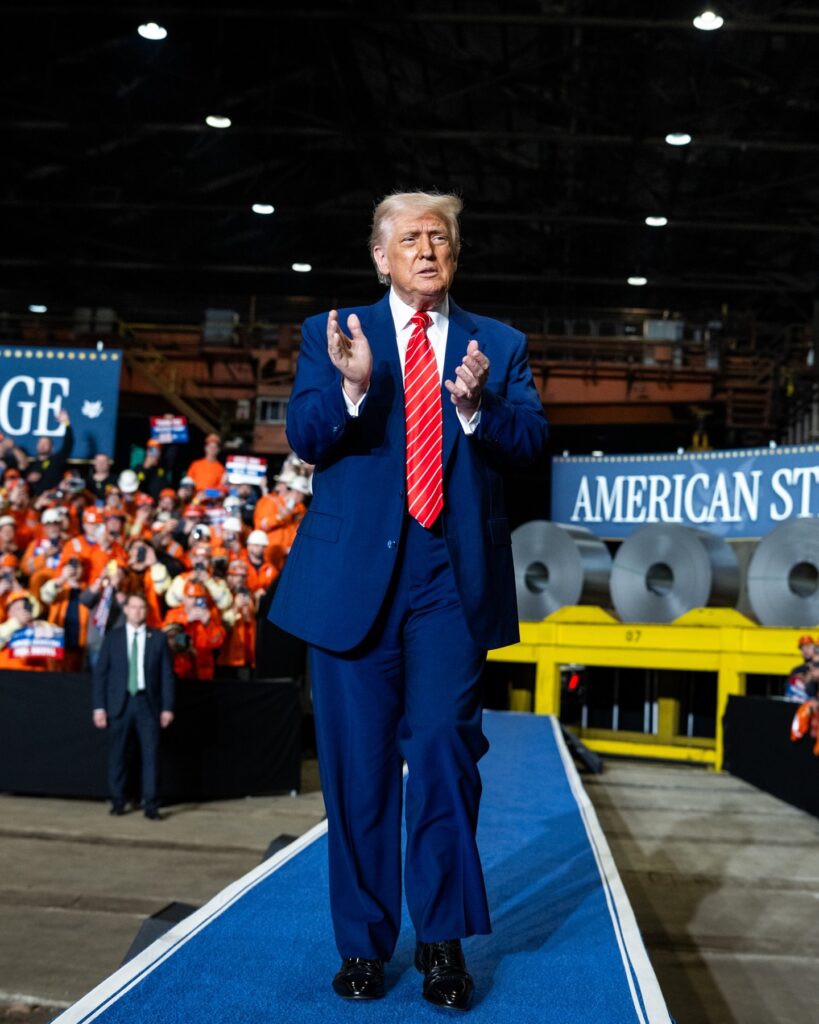
In recent years, the protection of American industries has taken center stage in the political and economic arenas. One of the most significant moves to bolster U.S. manufacturing has been the implementation of tariffs on imported steel. Under President Donald Trump’s administration, a bold step was taken to safeguard American steelworkers and the steel industry at large: a 50% tariff on imported steel products. This policy, rooted in the “America First” agenda, has sparked intense debate, but it undeniably underscores a commitment to reviving domestic production and preserving national security.
Let’s dive into the details and significance of this landmark policy through a photo-driven exploration of its impact, key moments, and the administration’s firm stance on protecting American steel.
The Rationale Behind the Tariffs
The decision to impose a 50% tariff on steel imports was fueled by concerns over unfair trade practices and the threat of cheap, subsidized foreign steel flooding the American market. For decades, U.S. steel manufacturers faced challenges competing with countries that heavily subsidized their steel industries, leading to factory closures, job losses, and economic decline in steel-producing regions.
President Trump and his administration framed the tariffs as a necessary intervention to revive the American steel industry. The tariff wasn’t just about economics — it was about national security. Steel is a critical material used in everything from infrastructure and construction to defense and transportation. Ensuring a robust domestic steel industry, the administration argued, is vital for the country’s ability to defend itself and maintain economic independence.
📸 Photo Moment 1: The Announcement

One of the most iconic images from this period is President Trump delivering the announcement of the steel tariffs. Standing in the White House, surrounded by steelworkers and industry leaders, Trump outlined the “50% tariff” plan with conviction. His message was clear: America will no longer tolerate unfair trade practices that harm its workers and industries.
This announcement was met with cheers from steelworkers who saw it as a long-overdue commitment to their livelihoods. The image captured the intersection of politics, industry, and national pride, symbolizing a renewed focus on protecting American jobs.
📸 Photo Moment 2: The Steel Mills Roaring Back to Life
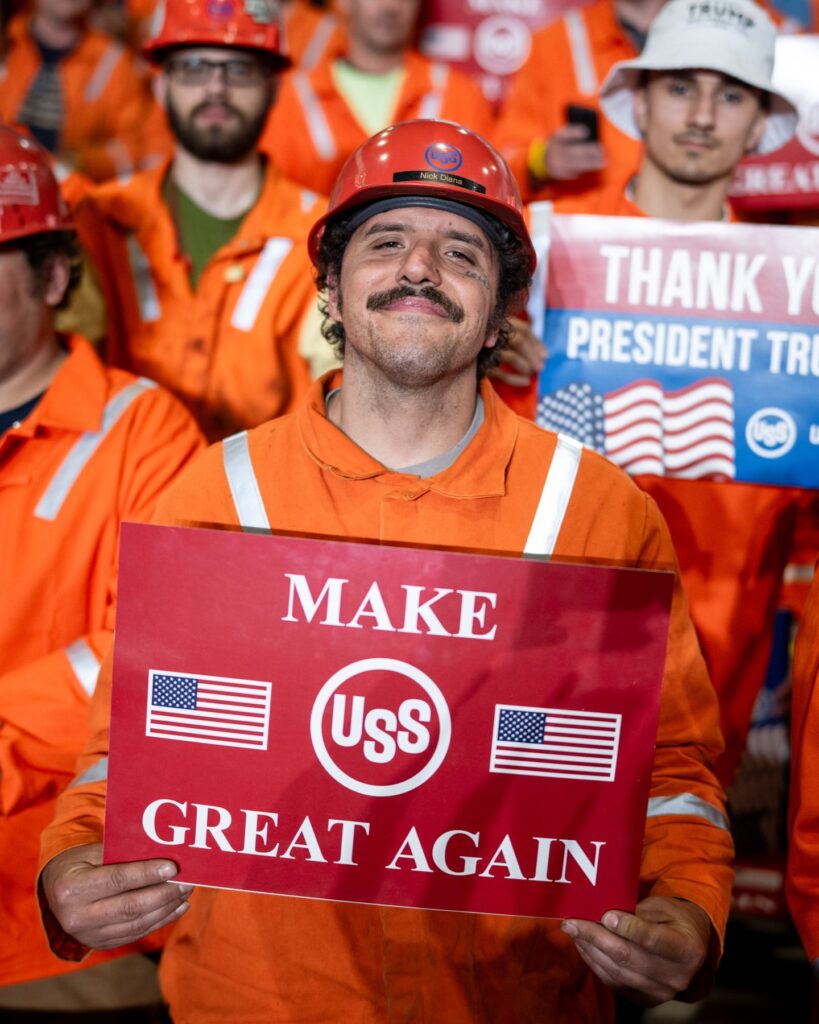
In the months following the tariff implementation, numerous steel mills across the country ramped up production. Photographs from key mills in Pennsylvania, Ohio, and Indiana show bustling factories with glowing molten steel and workers operating massive machinery. These images reflect a tangible resurgence in an industry once feared to be in irreversible decline.
Steelworkers wearing hard hats and reflective vests, captured in candid moments of pride and solidarity, embody the human side of this economic policy. These photos tell the story of a workforce revitalized by the promise of protection and investment in American industry.
📸 Photo Moment 3: The Political Rallying Cry
President Trump frequently used rallies and public appearances to reinforce his “America First” message. Photographs from rallies feature large crowds waving American flags and holding signs supporting the tariffs and domestic industry. The steel tariff became a powerful symbol of Trump’s broader economic nationalism.
Images of Trump addressing enthusiastic supporters with slogans like “Protect American Steel!” highlight how this policy transcended economics to become a cultural touchstone for many Americans who felt left behind by globalization.
The Economic Impact: Mixed but Meaningful

While the tariffs were controversial, they sparked important conversations about the future of manufacturing in the United States. Critics argued that higher steel prices could increase costs for industries reliant on steel, such as automotive and construction. Some trading partners retaliated with tariffs of their own, leading to trade tensions.
However, supporters pointed to job growth in steel-producing regions and increased domestic output as clear signs of progress. Photographs showing new hires in steel plants and expanding facilities provide visual evidence of the tariffs’ positive impact on American manufacturing jobs.
📸 Photo Moment 4: Steelworkers’ Stories
Beyond the policy headlines, images of individual steelworkers and their families tell a deeper story. Portraits of workers returning to jobs they thought were gone forever, or new employees training for careers in steel production, underscore the human element at the heart of the tariffs.
These photos reveal communities strengthened by the promise of industrial revival, where economic security means more than just numbers — it means real people, families, and futures.
The Global Trade Debate

The steel tariffs also ignited discussions on global trade dynamics. Photographs from international summits and trade negotiations capture tense moments as the U.S. stance on steel tariffs faced pushback from allies and trading partners. These images highlight the complexity of balancing protectionism with diplomatic relationships.
Despite criticism, the Trump administration maintained its position, prioritizing American economic interests and sovereignty. The images from these high-stakes negotiations tell a story of determination to defend domestic industries on the world stage.
📸 Photo Moment 5: The “America First” Branding
Throughout this period, the “America First” slogan became synonymous with the tariff policy. Images of the president wearing patriotic apparel, standing beside American flags, or visiting manufacturing plants reinforce the messaging. The visual branding underscored a political narrative that prioritized American workers and industries above all else.
This cohesive imagery helped galvanize support among voters who felt the country needed to reclaim its industrial might.
Looking Ahead: The Legacy of the Steel Tariffs
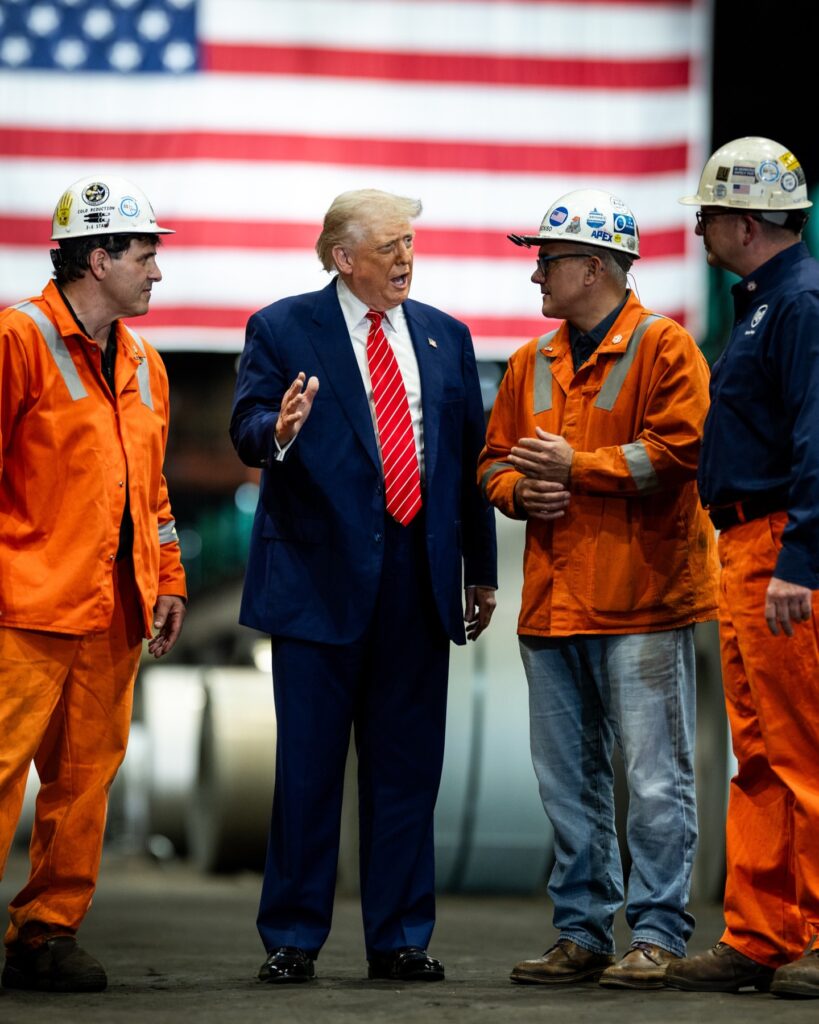
As the Trump administration’s tariffs continue to influence trade policy and industrial strategy, their legacy remains a subject of debate. Photographs from steel towns, factories, and political events serve as lasting reminders of a bold attempt to protect American steel through tough trade measures.
For many Americans, these images capture a moment of renewed hope — that American manufacturing can thrive once again with the right policies and leadership. Whether the tariffs were perfect or flawed, the visual story is one of resilience, pride, and a firm commitment to putting “America First.”
